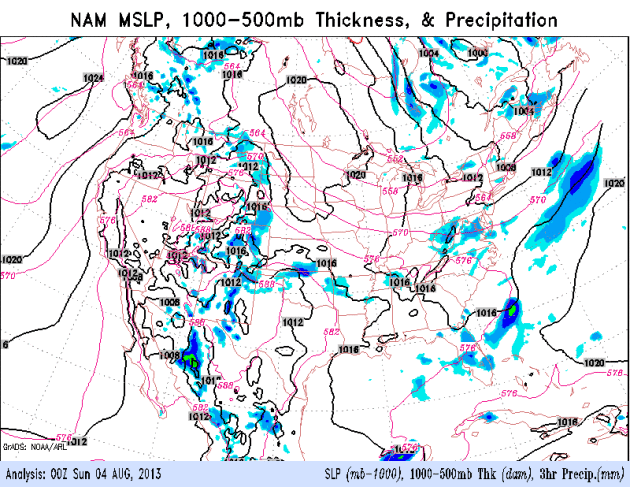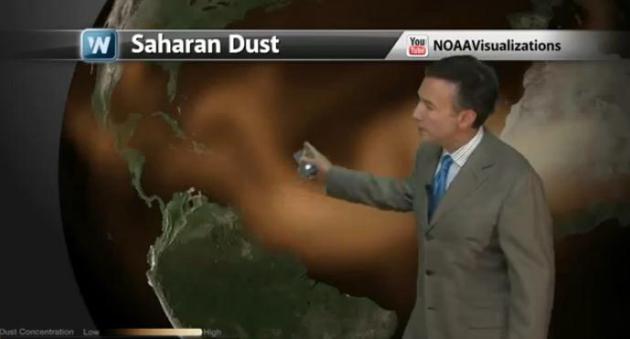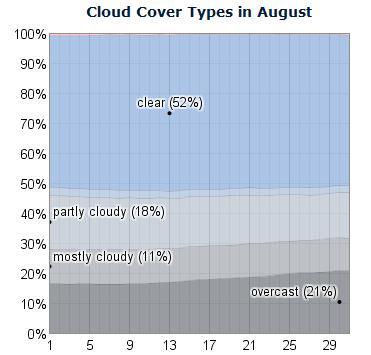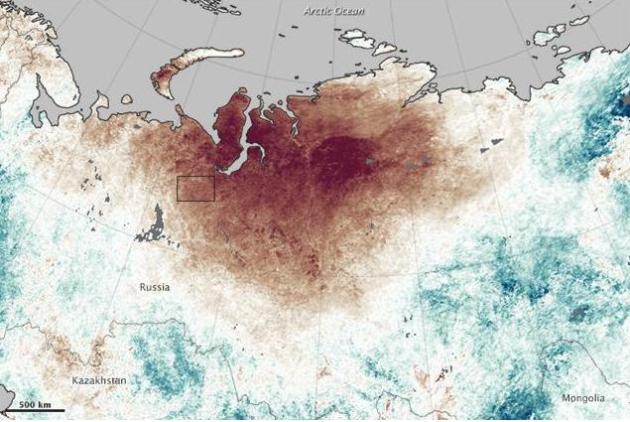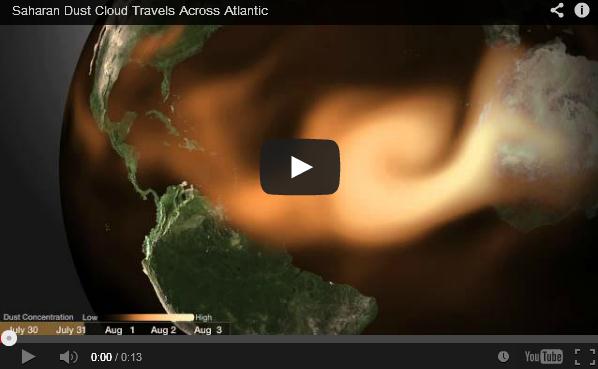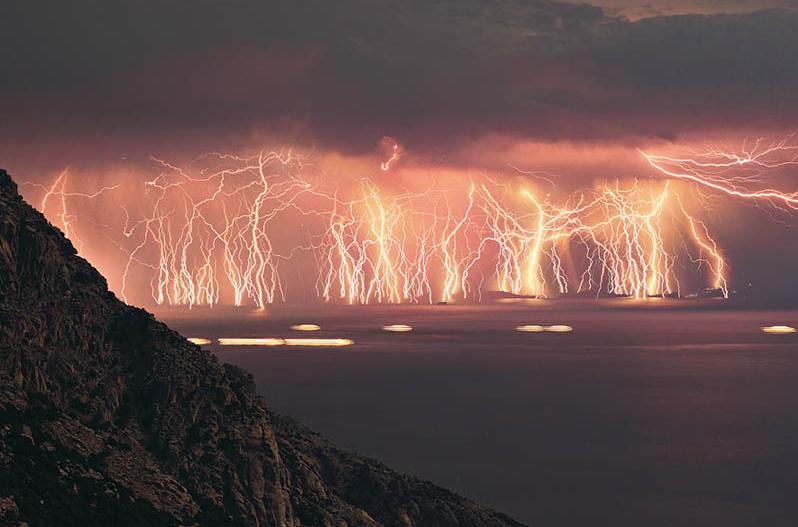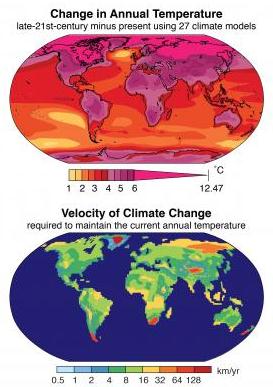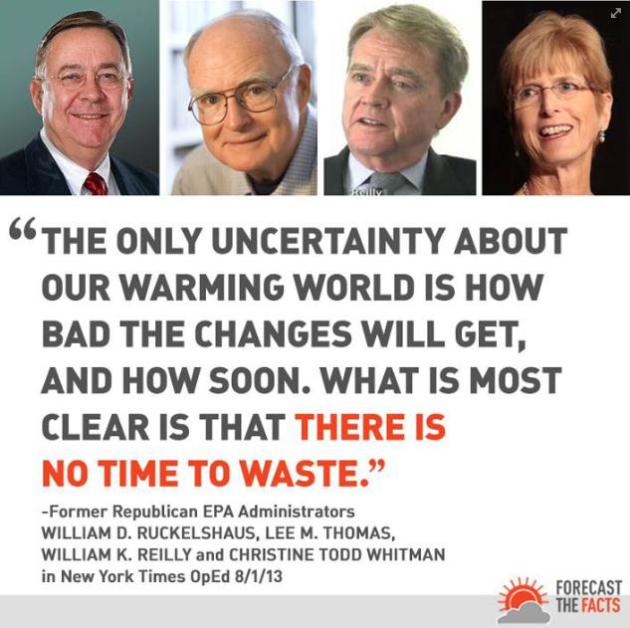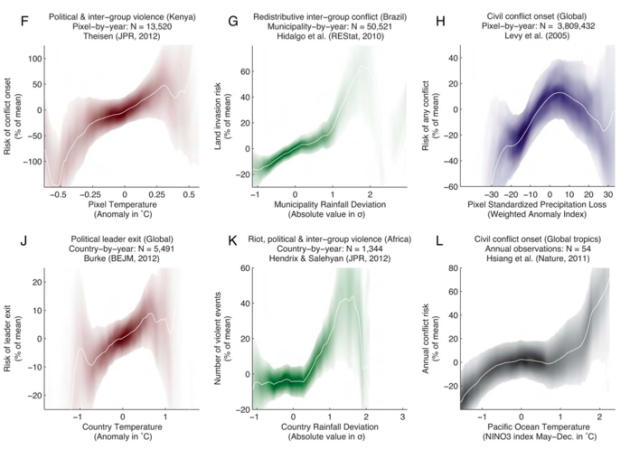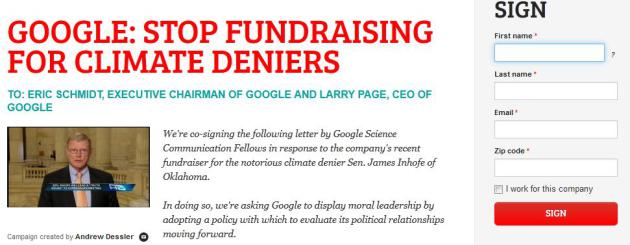Chaos Theory
Recently I had lunch with a farmer-friend who
wanted to get something off his chest. "Paul, you have Doppler,
supercomputers - more technology than NASA - why can't you predict
weather at my farm 30 days from now?"
Good question.
Some variation of the weather over our heads
today was floating over China or Siberia 2 weeks ago. Incomplete data,
imperfect weather models that only approximate how the atmosphere really
works? A tall order. It's like predicting the NASDAQ 30 days from now.
Trillions of variables, some unknowable. Good luck with that.
Day 3-7 accuracy improves 1 percent every year,
but I doubt we'll ever be able to forecast precise weather for a
location, weeks in advance.
It's getting too dry out there again, and the
timing is right: showers & T-storms tonight & Monday. Pulses of
cooler, Canadian air push across Minnesota this week, sparking more
T-storms late Tuesday, again Friday. With any luck skies clear again in
time for sunshine and 70s next weekend. We'll be lucky to see 80F over
the next 2 weeks; guidance hints at a few days near 90 the latter half
of August.
Meanwhile, just think of all the cold cash you're saving on air conditioning, ice cream & pop.
Lingering Cool Bias. ECMWF guidance shows an upward
blip in temperature Monday and Tuesday with highs near or just above
80F, then a series of cool fronts - Saturday the coolest day in sight.
A Well-Timed Watering. The chance (opportunity?) for
showers and T-storms will increase later tonight into Tuesday morning.
It's getting dry out there again, not 2012-dry, but we could use a good
watering. Models are hinting at more showers late Thursday ahead of the
next, even stronger push of Canadian air. Graphic: Iowa State.
South Sizzles - Family Of Cool Fronts Northern USA.
The soggy remains of "Dorian" pull out into the Atlantic, while a series
of Canadian cool fronts push a few waves of showers and T-storms across
the northern tier of the nation. The heaviest T-storms: central USA,
with persistently hot, dry weather from Texas to the west coast. 84-hour
NAM: NOAA.
First Perseids Of 2013.
Spaceweather.com
has a great update on the biggest meteor shower of the year. With
unusually clear skies, good visibility and low dew points you may have a
better chance that most (Augusts) to see a few lucky shooting stars
in the next 1-2 weeks. Here's an excerpt: "
Earth is entering
a broad stream of debris from comet
109P/Swift-Tuttle, source of the annual Perseid meteor shower.
Although the shower won't peak until
August 12-13, when Earth hits the densest
part of the stream, the first Perseids are already
arriving. "Despite poor weather over our network of meteor cameras,
we have detected six Perseid fireballs
since July 30th," reports Bill Cooke,
head of NASA's Meteoroid Environment Office. He
made this plot showing the orbits of the meteoroids."
Graphic credit above: "
In the diagram, the green lines
trace the orbits of Perseid meteoroids.
All six intersect Earth (the blue dot).
The orbit of the parent comet is
color-coded purple. An inset shows one of the
fireballs shining almost as brightly as the Moon:
video."
Colorado State Researchers Trim Atlantic Hurricane Outlook. I have little faith in these long-range hurricane forecasts, but in the spirit of full disclosure here's a clip from
The Capital Weather Gang: "
Expect
an above average Atlantic hurricane season say leading hurricane
researchers, but slightly less active than once thought. Phil Klotzbach
and William Gray of Colorado State University cut back their
prediction for the total number of hurricanes and major hurricanes
(category 3 or higher) by one, compared to forecasts made in April and
June. They are now forecasting 18 total named storms (including the
four which have already formed), 8 hurricanes and 3 major hurricanes
(category 3 or higher), compared to 18, 9 and 4, respectively in earlier
outlooks..." (File photo of Hurricane Irene from NASA).
Hurricane Hunters: Flying Two Storms Difficult, Three Storms Impossible.
The "Hurricane Hunters" flying out of Biloxi are watching not only
storms in the Atlantic, but their bottom line, as reported by
wlox.com; here's an excerpt: "
Hurricane
Hunters are tracking Tropical Storm Dorian while also keeping a
watchful eye on the bottom line. Military officials said with
sequestration and furloughs, the 53rd Weather Reconnaissance Squadron is
facing some tough choices as to which storms they fly into and how
often. They said that means the forecast models we depend on to tell
people to evacuate may not be as accurate. The mission of the Hurricane
Hunters is to fly into the eye of the storm and gather information to
help predict where that storm is likely to head next. However, the
403rd Wing Commander is wondering with sequestration and furloughs, how
much hunting Hurricane Hunters will be able to do. "I'll be honest
with you, it's a very significant cut in capability. It's a 20 percent
cut," said Col Craig LaFave..."
Dorian's Remnants, Saharan Dust, And Record Heat In Alaska, Greenland, The U.K. And China.
Talk about a mixed-up weather map; I guess we should be counting our
atmospheric blessings. Much of the southern and western USA
continues to bake, unusual warmth reaching unusually far north, but
the heating is anything but uniform. In today's edition of
Climate Matters
we track the soggy remains of "Dorian", link African dust to fewer
tropical storms, and highlight some of the more unusual warm weather
records: "
Dorian is brushing the eastern coast of Florida, but
other than that the Atlantic is pretty quiet. Could it have anything
to do with Saharan Dust? Then there are the heat records where you
might least it expect it. WeatherNation Chief Meteorologist shows us
where the warmth is around the globe. Pop Quiz: Which one of the
following three cities was the warmest Thursday? Fairbanks, Los
Angeles or New York City. Watch the video and see if you're right."
August Cloud Cover. Here's another snippet from a comprehensive look at August climatology in the Twin Cities, courtesy of
WeatherSpark. Yes, August tends to be (much) sunnier and drier than June and July, better odds of getting your outdoor events in: "
The
fraction of time spent in each of the five sky cover categories.
From top (most blue) to bottom (most gray), the categories are clear,
mostly clear, partly cloudy, mostly cloudy, and overcast. Pink
indicates missing data. Outside of the United States clear skies are
often reported ambiguously, leading them to be lumped in with the
missing data."
Sunburned In Siberia: Heat Wave Leads To Wildfires.
It's a strange weather map over the Northern Hemisphere - far northern
latitudes are setting record highs, while mid latitudes are trending
cooler than average, at least from the Upper Midwest to New England.
Parts of Russia are overheating, as reported by
Climate Central: "
An intense heat wave in Siberia has contributed to an unusual flare up of wildfires
across the fragile and carbon-rich landscape. Smoke from the fires is
lofting high into the atmosphere, and is drifting toward the Arctic,
where soot can hasten the melting of snow and sea ice. The Siberian city
of Norilsk, the most northerly city in the world with a population
greater than 100,000, recorded temperatures above 83°F over eight
consecutive days starting on July 18, according to blogger Chris Burt of Weather Underground.
During that timespan, Burt reported, the mercury hit 90°F, breaking
the record for the hottest temperature recorded for the city. For
comparison the average July high temperature in Norilsk is a
comparatively chilly 61°F..."
Image credit above: "
The map above shows land surface temperature anomalies for July 20–27, 2013, collected by the MODIS imager on NASA's Terra satellite." Credit: NASA Earth Observatory.
Worst Heat Wave In At Least 140 Years Hits Parts Of China; Dozens Of Deaths Reported. Here are a few excerpts from an AP story at
Fox News: "...
On
Tuesday, the director of the China Meteorological Administration
activated a "level 2" emergency response to the persistent heat wave.
This level requires around-the-clock staffing, the establishment of an
emergency command center and frequent briefings. Some Chinese in
heat-stricken cities have been cooking shrimps, eggs and bacon in
skillets placed directly on manhole covers or on road pavement that has
in some cases heated up to 60 degrees C (140 F)...In the port city of
Ningbo in Zhejiang province, glass has cracked in the heat, vehicles
have self-combusted, and a highway billboard caught fire by itself,
sending up black smoke in the air, according to China Central
Television. The broadcaster said the heat might have shorted an
electrical circuit on the billboard..."
File photo credit above: "
A visitor who has his top off
tries to cool off in the afternoon heat at the Bund, one of the most
popular tourist spots in the city, in Shanhai, China." (AP Photo/Eugene Hoshiko).
Rethinking Flood Insurance As Toll Rises. Because in
light of the trends: more numerous, extreme (and expensive) flooding
disasters, the current model may be unsustainable. Here's the intro
to an Op-Ed at
livescience.com: "
As
society looks toward a future with rising sea levels and more
frequent and severe storms, the United States can also expect to see
more frequent and severe flooding along rivers and coastlines. That
means property owners will increasingly turn to the Federal Emergency
Management Agency (FEMA) and its National Flood Insurance Program to
bail them out. But why does the federal government underwrite 5.6
million flood insurance policies — in many cases at highly subsidized
rates?..."
Photo credit above: "The
storm surge from Hurricane Sandy leaves much of Chincoteague
National Wildlife Refuge in Maryland under water, including this boat
ramp along the Assateague Channel, on Monday, Oct. 29, 2012." Credit: J.Fair/USFWS.
South America Might Soon Be Covered In Thousands Of Tons Of Dust From The Sahara Desert. Dust which may be reducing the odds of hurricane formation over the Atlantic, btw.
Quartz has the story (and amazing NOAA visualization); here's a clip: "
In
the next couple of days, South Americans could get a taste of Africa
without even stepping on a plane. That’s because powerful winds over
the continent are lifting up thousands of tons of dust from the
Sahara Desert, and moving it 5,000-or-so miles over the Atlantic Ocean
toward northern Brazil, Venezuela, Colombia and other places around
the Caribbean Sea. The great migration of desert granules is in fact a
“quite common” occurrence, according to NOAA,
raising the startling thought that the dust in our eyes on a windy
day could’ve once been stuck in a camel’s foot pad. This most recent
movement of grit is somewhat special, though, in that it’s much more
concentrated than usual. By Friday and the weekend, it will be flying
over South and Central America, with urban areas in its possible path
including Caracas, Bogotá, Panama City, Port-au-Prince, and San Juan
in Puerto Rico..."
Workplace Bullies Target The Unattractive. So this is why so many people are picking on me at work. And it's my company! The nerve. Here's an excerpt from an article at
The Wall Street Journal: "
More
evidence that there’s little difference between the office and a
high school cafeteria: workplace bullies tend to pick on colleagues
who are considered unattractive, according to a new study.
Researchers Timothy Judge of the University of Notre Dame in Indiana
and Brent Scott of Michigan State University surveyed 114 workers at a
health-care facility to find out how often coworkers bullied them.
Bullying was defined as acting rudely, teasing or saying hurtful
statements. Separately, other participants viewed digital photos of the
health-care workers, grading their attractiveness. Workers whose
photos were graded as unattractive tended to be more likely to have
reported being subjected to rude or even cruel treatment by coworkers,
said Dr. Judge..." (Image credit
here).
Climate Stories....
"...
Did you know air conditioner use in the U.S. results in an average of about 100 million tons of CO2 emissions from power plants every year ?..." - from an Op-Ed at
Huffington Post.
Permafrost Melting Faster Than Expected In Antarctica.
StateImpact Texas from NPR has the story - here's the introduction: "
New
research shows melting at rates comparalbe to the Arctic. Unlike the
Arctic Circle up north, where once-permanent sea ice began melting and
miles of permafrost began thawing decades ago, the ground ice in
Antarctica’s Garwood Valley was generally considered stable. In this
remote polar region near the iceberg-encrusted Ross Sea, temperatures
actually became colder from 1986 to 2000, then stabilized, while the
climate in much of the rest of the world warmed during that same
period. But now, the ice in Antarctica is melting as rapidly as in the
Arctic..."
Photo credit above: Dr. Joseph Levy / The University of Texas Institute for Geophysics. "
Research team member Jim O'Connor of the USGS inspects a block of ice calved off the Garwood Valley ice cliff."
Small Businesses Face "Major Extreme Weather Challenges".
Environmental Leader has the article; here's an excerpt: "
US
small businesses — which employ 60 million Americans, or about half of
the workforce — are particularly at risk from extreme weather and climate change
and must take steps to adapt, according to a report from Small
Business Majority (SBM) and the American Sustainable Business Council
(ASBC). Climate Change Preparedness and the Small Business Sector
says the retail, tourism, landscape architecture, agriculture,
roofing, and small-scale manufacturing sectors are more vulnerable to
the financial implications of climate change than their larger
corporate counterpart.
The report finds:
- Lacking access to the capital and resources of large
corporations, small businesses can suffer lasting economic damage as a
result of a single extreme weather event. For example, of the 60,000 to
100,000 small businesses negatively affected by Hurricane Sandy, up to
30 percent are estimated to have failed as a direct result of the
storm..."
America's Dangerous Pipelines. Generating
electricity comes with inherent levels of risk (with the possible
exception of solar and photo voltaic). In the ongoing controversy over
the proposed Keystone XL Pipeline I thought I'd share this video
animation and explanation from
The Center For Biological Diversity. is the upside worth the risk? "
This
time-lapse video shows pipeline incidents from 1986 to 2013,
relying on publicly available data from the federal Pipeline and
Hazardous Materials Safety Administration. Only incidents classified
as “significant” by the agency are shown in the video. “Significant”
incidents include those in which someone was hospitalized or
killed, damages amounted to more than $50,000, more than 5 barrels
of highly volatile substances or 50 barrels of other liquid were
released, or where the liquid exploded or burned. According
to the data, since 1986 there have been nearly 8,000 incidents
(nearly 300 per year on average), resulting in more than 500 deaths
(red dots on the video), more than 2,300 injuries (yellow dots on the
video), and nearly $7 billion in damage. Since 1986 pipeline
accidents have spilled an average of 76,000 barrels per year or more
than 3 million gallons. This is equivalent to 200 barrels every day..."
Data Source: U.S. Department of Transportation Pipeline and Hazardous Materials Safety Administration.
Climate Change Occurring 10 Times Faster Than At Any Time In Past 65 Million Years.
Phys.org has the story - here's a clip: "
The
planet is undergoing one of the largest changes in climate since the
dinosaurs went extinct. But what might be even more troubling for
humans, plants and animals is the speed of the change. Stanford climate
scientists warn that the likely rate of change over the next century
will be at least 10 times quicker than any climate shift in the past 65
million years. If the trend continues at its current rapid pace, it
will place significant stress on terrestrial ecosystems around the
world, and many species will need to make behavioral, evolutionary or
geographic adaptations to survive..."
Graphic credit above: "
Top: The change in annual
temperature projected for the late 21st century using simulations from
27 global climate models. The change is calculated as the 2081-2100
mean minus the 1986-2005 mean. Bottom: the velocity of climate change
required to maintain the current annual temperature should the
late-21st-century climate change occur. The velocity is calculated for
each location by identifying the closest location in the future climate
that has the same annual temperature as the starting location has in
the present climate." Credit: Noah Diffenbaugh.
Climate Change Becoming A Defining Issue For Young Voters Nationwide.
Huffington Post has the details; here's an excerpt: "
The
politics of climate change is shifting, and politicians --
particularly Republicans -- are going to need to make some quick
decisions. Whether it's record heat waves, wildfires, floods or storms,
the impacts of climate change are taking hold nearly every day. Our
way of life is being violently transformed, and Americans are taking
notice, especially younger voters whose future is at stake. And this
could have a big impact at the ballot box. LCV recently released a bipartisan poll
showing that young voters across the country are concerned about
climate change and support federal action to address it. It also showed
that young people soundly reject the false choice between economic
prosperity and action on climate change that many climate change
deniers hide behind. And a solid majority in our poll said they are
willing to hold accountable those who ignore the problem, going so
far as to describe climate change deniers as "ignorant" and
"out-of-touch." In fact, 73 percent of young voters said they are
less likely to vote for someone who opposes President Obama's
landmark plan on climate change..."
Image courtesy of
Forecast The Facts.
Top: The change in
annual temperature projected for the late 21st century using simulations
from 27 global climate models. The change is calculated as the
2081-2100 mean minus the 1986-2005 mean. Bottom: The velocity of climate
change required to maintain the current annual temperature should
the late-21st-century climate change occur. The velocity is
calculated for each location by identifying the closest location in
the future climate that has the same annual temperature as the
starting location has in the present climate. Credit: Noah
Diffenbaugh
Read more at:
http://phys.org/news/2013-08-climate-faster-million-years.html#jCp
The planet is
undergoing one of the largest changes in climate since the dinosaurs
went extinct. But what might be even more troubling for humans, plants
and animals is the speed of the change. Stanford climate scientists
warn that the likely rate of change over the next century will be at
least 10 times quicker than any climate shift in the past 65 million
years.
Read more at:
http://phys.org/news/2013-08-climate-faster-million-years.html#jCp
The planet is
undergoing one of the largest changes in climate since the dinosaurs
went extinct. But what might be even more troubling for humans, plants
and animals is the speed of the change. Stanford climate scientists
warn that the likely rate of change over the next century will be at
least 10 times quicker than any climate shift in the past 65 million
years.
Read more at:
http://phys.org/news/2013-08-climate-faster-million-years.html#jC. Here's a clip from an AP story at
Newser.com: "
As
the world gets warmer, people are more likely to get hot under the
collar, scientists say. A massive new study finds that aggressive acts
like committing violent crimes and waging war become more likely with
each added degree. Researchers analyzed 60 studies on historic
empire collapses, recent wars, violent crime rates in the United
States, lab simulations that tested police decisions on when to shoot
and even cases where pitchers threw deliberately at batters in
baseball. They found a common thread over centuries: Extreme weather _
very hot or dry _ means more violence. The authors say the results
show strong evidence that climate can promote conflict. "When the
weather gets bad we tend to be more willing to hurt other people,"
said economist Solomon Hsiang of the University of California,
Berkeley. He is the lead author of the study, published online
Thursday by the journal Science. Experts in the causes of war gave it
a mixed reception..."
Hotter Weather Actually Makes Us Want To Kill Each Other. Here's a slightly different perspective on the new research finding from
The Atlantic: "
Farmers
in Brazil are more likely to invade each others' land in years that
are particularly wet or unusually dry. Americans honk their horns
more at other cars when it's hot outside. Countries in the tropics
are more likely to have civil wars in years that are especially hot
or dry. They may seem random, but actually, these events are all
connected. New research from Princeton University and UC Berkeley
published today in Science reveals a link between big shifts in
climate and precipitation and a rise in interpersonal violence,
institutional breakdown, and especially inter-group violence,
such as war. Not only does the paper shed light on past bouts of
global conflict, it also offers a warning about the future. The world
is expected to warm by at least 2 degrees Celsius over the next
few decades, unless governments do something drastic, and the
researchers say that increased bloodshed could be a serious
side-effect of that trend..."
Consider Signing The Petition. Details on Google's recent fund-raiser for James Inhofe and an online petition can be found
here.
GOP Lawmakers Hit By Weather Tragedies Stay Mum On Climate Change.
InsideClimate News has the story - here's a clip: "..."
I've
lived in my part of Arizona my whole life," Grijalva, 65, said in an
interview. "I've never seen conditions like the ones we've had the
last few years. Watching my constituents deal with the effects of
climate change—the droughts, the record temperatures, the fires—how
could I not make it a priority?" In the district next door to
Grijalva's, however, the message being conveyed is far different. That
area, represented by Paul Gosar,
a Republican, is experiencing similar climate extremes. But Gosar
rejects the scientific consensus that carbon dioxide from burning
fossil fuel and other human activities are causing the earth to warm.
And he sees no connection between climate change and the extreme
weather raging in his home district—including the Yarnell wildfire,
which claimed the lives of 19 firefighters in June—according to his
spokesman, Orlando Watson. Gosar has voted against all
climate-related legislation in the past few years..."
Photo credit above: "
A home destroyed by the Yarnell Hill
fire late last month, in Yarnell, Ariz., July 23, 2013. In Yarnell,
where 19 members of the Granite Mountain Hotshots died in the line of
duty and where the homes destroyed by fire sit next to those
mysteriously spared, residents struggle to ascribe meaning to what
happened." (Joshua Lott/The New York Times).
McCarthy: Climate Change Is "Opportunity Of A Lifetime".
National Geographic has more on the new EPA Administrator's goals and objectives; here's an excerpt: “
Let’s talk about this as an opportunity of a lifetime, because there are too many lifetimes at stake,” McCarthy said of regulating emissions, noting the EPA will work to develop a “new mindset about
how climate change and environmental protection fits within our
national and global economic agenda.” Although the EPA has met some
opposition from industry groups and Republicans who say environmental
regulation hurts the economy, McCarthy said she planned to continue issuing new rules and felt President Barack Obama’s new Climate Action Plan could “fuel the complementary goals of turning America into a magnet for new jobs and manufacturing...”



